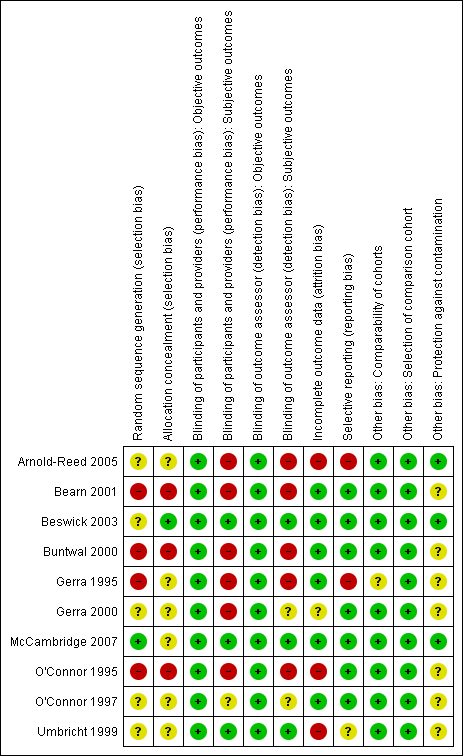Contenido relacionado
Revisiones y protocolos relacionados
Linda Gowing, Robert Ali, Jason M White | 20 enero 2010
Linda Gowing, Michael Farrell, Robert Ali, Jason M White | 3 mayo 2016
Linda Gowing, Robert Ali, Jason M White, Dalitso Mbewe | 21 febrero 2017
Silvia Minozzi, Laura Amato, Cristina Bellisario, Marina Davoli | 29 abril 2014
Philipp Lobmaier, Hege Kornor, Nikolaj Kunoe, Arild Bjørndal | 23 abril 2008
Tara Carney, Marie Claire Van Hout, Ian Norman, Siphokazi Dada, Nandi Siegfried, Charles DH Parry | 18 febrero 2020
Afarin Rahimi‐Movaghar, Jaleh Gholami, Laura Amato, Leila Hoseinie, Reza Yousefi‐Nooraie, Masoumeh Amin‐Esmaeili | 21 junio 2018
Richard P Mattick, Courtney Breen, Jo Kimber, Marina Davoli | 6 febrero 2014
Susanne Rösner, Andrea Hackl‐Herrwerth, Stefan Leucht, Simona Vecchi, Manit Srisurapanont, Michael Soyka | 8 diciembre 2010
Laura Amato, Silvia Minozzi, Marina Davoli, Simona Vecchi | 5 octubre 2011







